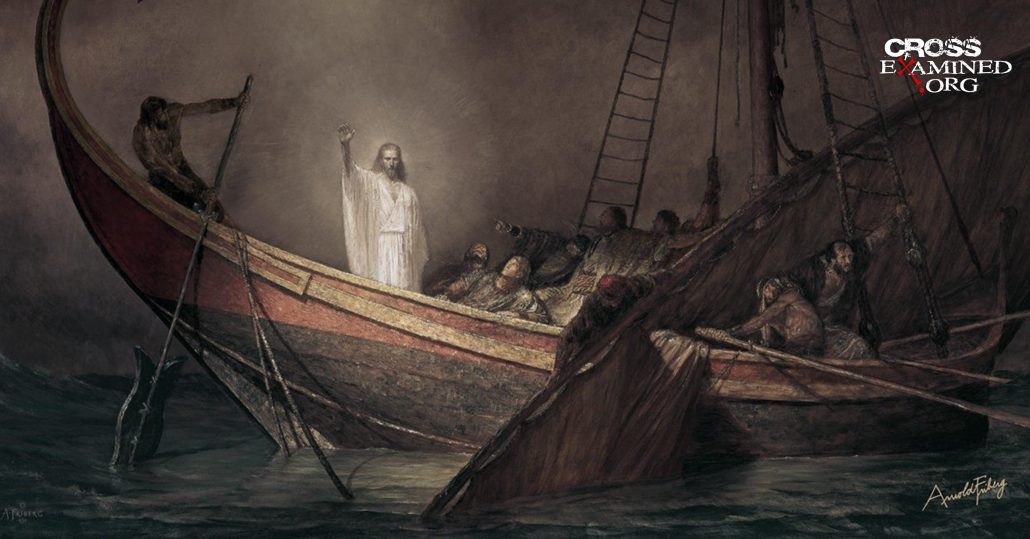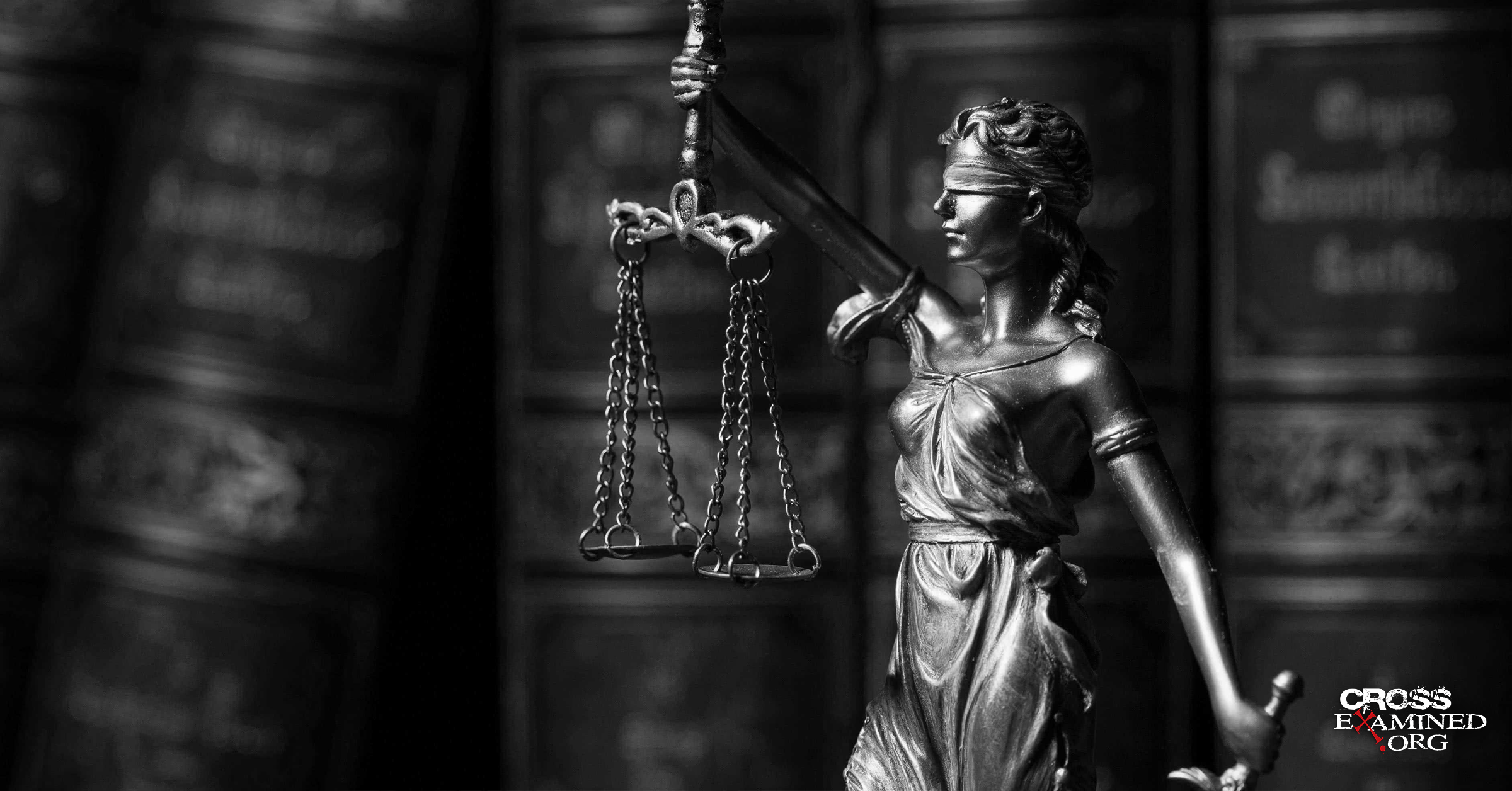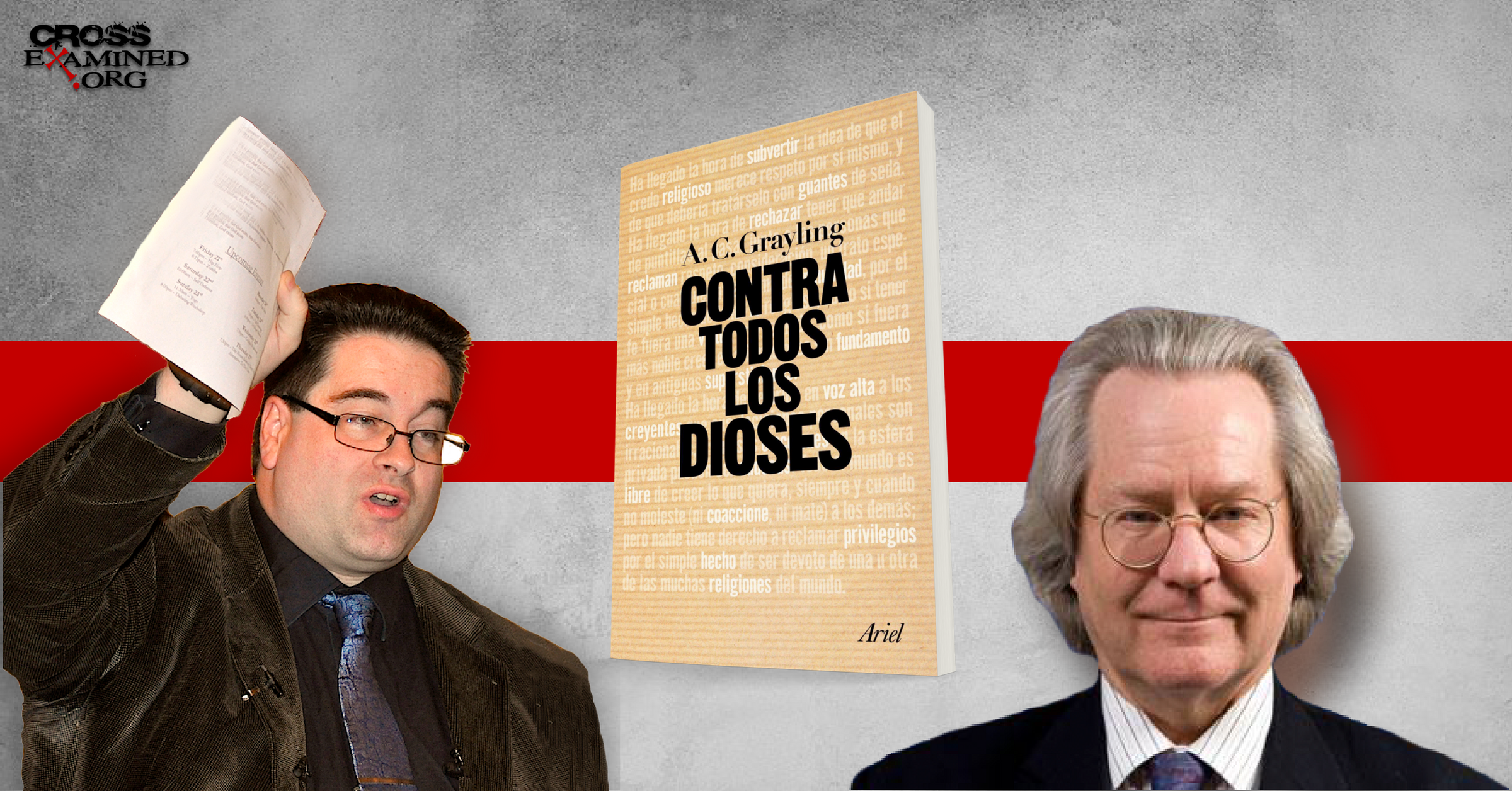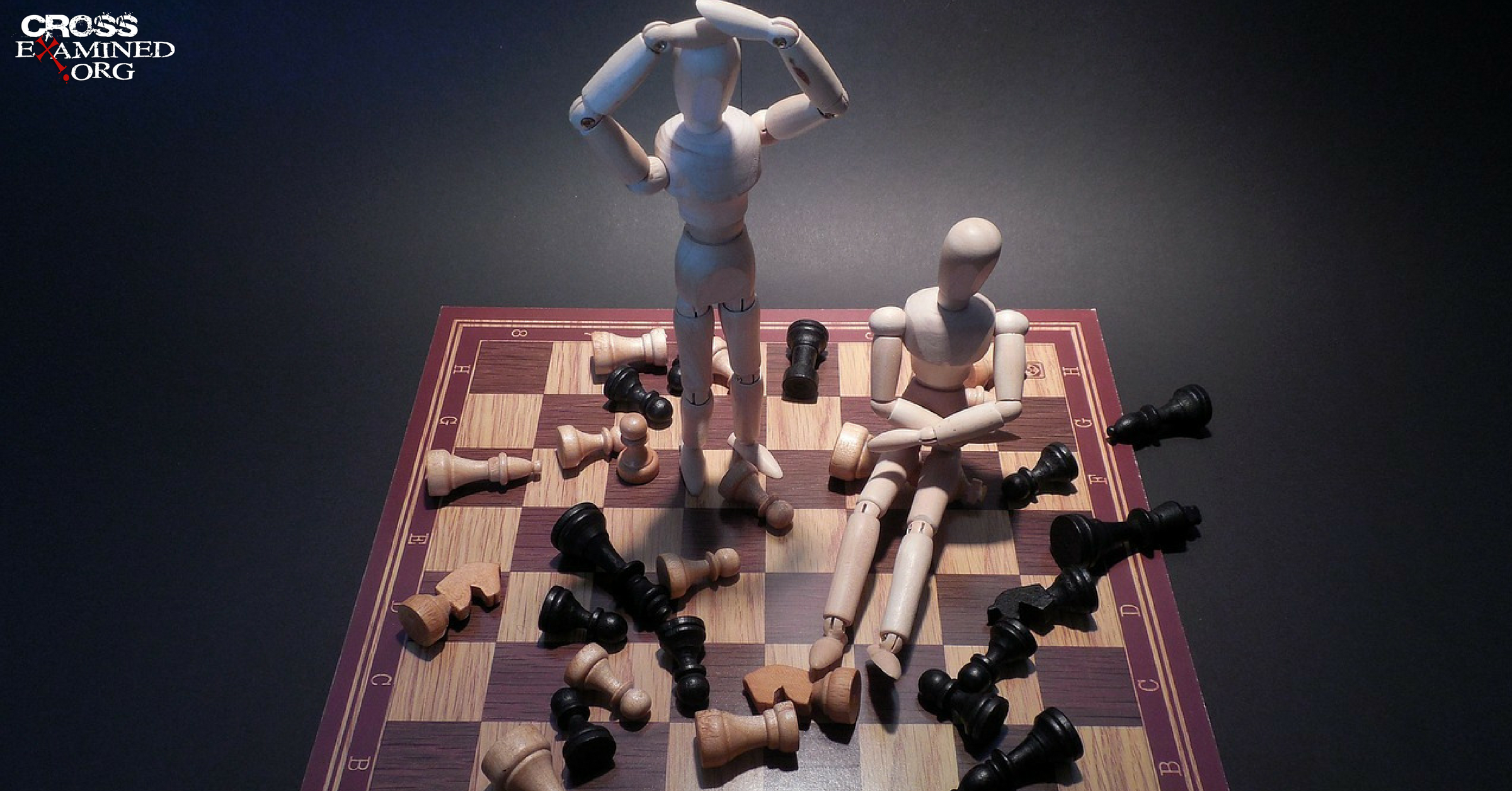The Evidence For Jesus’ Resurrection, Part 4: Fact (2) The Empty Tomb
We saw in the previous blog post that the historical evidence for Jesus’ death was overwhelming. Even several non-Christian scholars affirm it, and even say that it’s the one fact about Jesus that is indisputable. However, what happened to Jesus after He died? The New Testament says that He was placed in a tomb that was found vacant 3 days later by a group of Jesus’ women followers. This is the second minimal fact in our case for Jesus’ resurrection. But what evidence is there that Jesus’ grave was really empty? How do we know that Jesus’ body was really absent from the tomb?
There are several reasons that I know of to believe that Jesus’ tomb was empty. Let’s look at them.
Reason 1: The Jerusalem Factor
All 4 gospels attest that Jesus was crucified and buried in Jerusalem. Now, history tells us that Christianity had a lot of opposition in the first century, from both the Jewish leaders as well as the Roman government. If the enemies of Christianity, like the Pharisees, truly wanted to stamp out the early Christian movement, the easiest way to do it would be to down to Jesus’ tomb, pluck the body out of the tomb and parade it down the streets for all to see. Everyone who gazed upon the dead corpse of Jesus as the Pharisees carried it around Jerusalem would know for a fact that the disciples were lying about Jesus being raised from the dead. Christianity would be destroyed before it even had a chance to get off the ground. However, Christianity did not die in the first century. It’s still alive today? How do we explain this? I think the best explanation is that the Jewish leadership did not go down to Jesus’ grave and exhume his corpse. Why didn’t they do that? I think the best explanation for that is that Jesus’ body wasn’t even in there to be taken out!
If Jesus’ body were still in the tomb, the enemies of Christianity would have definitely taken the body out of the tomb and showed it to everyone, squashing the entire Christian movement and demonstrating it to be a hoax. This would be the easiest way at that time to refute Christianity. If they had done that, we would not be having this discussion right now. But we are having this discussion right now, most likely because they didn’t produce the corpse, and they didn’t produce the corpse because there was no corpse to be produced.
Objection: Jesus’ Body Was Unrecognizable By The Time The Disciples Started Proclaiming The Resurrection, So Producing The Corpse Would Have Done No Good.
Some skeptics have responded to this argument by saying that Jesus’ body was unrecognizable by the time the disciples started running around telling folks that He rose from the dead, so it wouldn’t really have the effect of demolishing the Christian faith after all. Consequently, the enemies of Christianity either didn’t produce the body, or they did but people just responded: “That’s not really Jesus”.
There are some problems with this objection. First of all, in the arid climate of Jerusalem, a corpses’ distinctive wounds, stature, and hair color, and hair style would have been identifiable even after 50 days (the time when the book of Acts says the disciples started proclaiming Christ’s resurrection).[1] Therefore, it would have been no trouble to figure out whether a corpse belonged to Jesus or not. A person could examine the corpse’ physical stature, weight, distinctive wounds (“does this corpse bear the wounds consistent with a crucified victim?”), and hair color and style to see if it was consistent with what one would expect Jesus’ corpse to be like. You don’t even need to be a trained forensic pathologist to do this. Anyone of any education level could check these things out.
Secondly, even if Jesus’ body truly was unrecognizable, we should still have expected any body at all to have created a mass exodus from the Christian church, even if a small number of adherents remained. Such an exodus would surely have been picked up by Lucian of Samosata, who was ridiculing Christianity in his work and would surely have loved to use such an incident as evidence against the Christians’ claims. Moreover, we would expect the early church apologists like Justin Martyr to try to respond and explain this mass exodus and why there was a body in Jesus’ tomb if Jesus had really risen. Yet, history is silent on such an exodus. None of the non-Christian historians say anything about it, and none of the early church fathers feel compelled to address it.
Reason 2: All Four Gospels Feature Women As Witnesses To The Empty Tomb
All four gospels feature women at the first witnesses to Jesus’ empty tomb. Now, why is that significant? As I briefly mentioned in the previous chapter, women were considered second class citizens in the first century. Talmud Sotah 19a says “Sooner let the words of the law be burnt than delivered to women“! The Talmud also contains a rabbinic saying that goes like this: “Blessed is he whose children are male, but woe to him whose children are female”! And according to the Jewish historian Josephus, their testimony was considered so untrustworthy that they weren’t even permitted to serve as witnesses in a Jewish court of law! Josephus wrote: “But let not the testimony of women be admitted, on account of the levity and boldness of their sex, nor let servants be admitted to give testimony on account of the ignobility of their soul; since it is probable that they may not speak truth, either out of hope of gain, or fear of punishment.” (Antiquities, 4.8.15).
Women were (A) second-class citizens, and (B) considered to be so untrustworthy that they couldn’t even stand as witnesses in a court of law! In light of this fact, how remarkable it is that it is women who are said to be the chief witnesses to the empty tomb, rather than men. If the gospel authors were playing fast and loose with the facts, they surely would have made male disciples such as Peter or John the chief witnesses to the empty tomb. The fact that it is women instead of men who are said to be the first witnesses to the empty tomb is best explained by the fact that the empty tomb narratives in the gospels are true!
To make women, your first witnesses to the empty tomb would be to insert words into the mouths of witnesses who would not be believed. Therefore, by the principle of embarrassment, we have good reason to believe the tomb was empty.
Reason 3: The Enemies Of Christianity Presupposed The Vacancy Of The Tomb When They Said That The Disciples Stole The Body
When a child tells his teacher that the dog ate his homework, that presupposes that the homework is not in the child’s possession. When the enemies of Christianity have to resort to accusing the disciples of stealing the body, that presupposes that there is no body in the tomb.
“While the women were on their way, some of the guards went into the city and reported to the chief priests everything that had happened. When the chief priests had met with the elders and devised a plan, they gave the soldiers a large sum of money, telling them, ‘You are to say, ‘His disciples came during the night and stole him away while we were asleep.’ If this report gets to the governor, we will satisfy him and keep you out of trouble.’ So the soldiers took the money and did as they were instructed. And this story has been widely circulated among the Jews to this very day.” – Matthew 28:11-15
This is powerful evidence due to a historian’s principle known as The Principle Of Enemy Attestation. Now, you might be wondering why we should view this as good evidence for the empty tomb, since it’s comes from Matthew’s gospel and not directly from the Jewish leadership themselves. It’s not like it’s coming out of a book written by Caiaphas where he writes “The tomb was empty because the disciples took his body” or anything like that. Couldn’t Matthew have made this up simply to make the empty tomb story seem more credible? Well, no. I don’t think so. I say that for three reasons.
First, consider the fact that Matthew says “This story has been widely circulated to this very day.” Now, what does “to this very day” mean? Clearly, Matthew is saying that the opponents of Christianity were running around spreading this story even at the very time period that he was penning these words! They were making this claim to potential converts even during the very time period that Matthew was writing his gospel. If the anti-Christian Jews were not making that accusation, then Matthew could have easily been falsified. People could have gone to the Jewish leadership and asked them “We read in the gospel of Matthew that you deny Jesus rose from the dead. You explain his empty tomb by saying they stole the body. Is this true?” If it wasn’t true, the Jewish leadership could have said “What? We said no such thing! What are you talking about?” Would Matthew really open himself up to such easy falsification?
Secondly, people don’t usually respond to accusations unless someone actually made that accusation of them. Imagine you walk into your front yard and discover that your car is missing. In a panic, you cry out “My car is gone! My car is gone! What happened to it!? Dude, where’s my car!?” and then your friend shows up and says “Gee, that’s a shame. I don’t know what happened to your car, but it’s not like I stole it or anything!!!” You would look at your friend funny and say “I never said that you stole my car. Wait a minute, is there something you’re not telling me?” People simply don’t respond to accusations unless there is truly an accuser. In those rare moments that they do respond to non-existent accusations, they cause themselves to look guilty of the very thing they’re denying.
Thirdly, the claims of the opponents of Christianity is multiply attested. In Justin Martyr’s “Dialogue With Trypho,” he responds to this accusation from the Jews, and Tertullian rebuts it as well in his work “De Spectaculous.” This implies that the enemies of Christianity really were making this claim. It originated in the first century and persisted throughout the second and third.
Reason 4: The Empty Tomb Is Multiply Attested
The empty tomb is mentioned in multiple, independent sources. It’s mentioned in (1) The synoptic gospels, (2) the gospel of John, and (3) the early creed cited in 1 Corinthians 15.
Given the fact that the tomb is attested in 3 independent sources, it is very probable that Jesus’ tomb was in fact, empty. Remember what Paul Maier said in the previous chapter? This former professor of ancient history at Western Michigan University said that if an event is mentioned in two or three sources, it’s impregnable. That is to say; it almost certainly occurred. Well, that’s what we have with the empty tomb. Three independent sources. On the basis of the principle of multiple attestations, we have good reason to believe Jesus’ tomb was empty.
Now, some may object “Wait a minute! Paul never mentions the empty tomb in 1 Corinthians 15!” And these objectors would be right. However, while the empty tomb is not explicitly mentioned in the creed, it is implicitly mentioned. Dr. William Lane Craig explains that “The old tradition cited by Paul in I Cor. 15.3-5 implies the fact of the empty tomb. For any first century Jew, to say that of a dead man ‘that he was buried and that he was raised’ is to imply that a vacant grave was left behind.”[2]
Reason 5: Mark’s Account Is Simple And Lacks Signs Of Embellishment
Dr. William Lane Craig explains that “All one has to do to appreciate this point is to compare Mark’s account to the accounts which are found in the later apocryphal gospels. These are forgeries that arose during the centuries following the appearance of the New Testament. These do contain all sorts of wild, legendary accounts about the resurrection. For example, in the so-called Gospel of Peter, which is a forgery from the second half of the second century after Christ, the tomb is surrounded not only by a Roman guard, but also by all of the chief priests and the Pharisees, as well as a huge crowd of people from the surrounding countryside who have come to watch the tomb. Suddenly, during the night, a voice rings out from heaven, and the stone over the door of the tomb rolls back by itself, then two men are seen descending out of heaven and entering into the tomb, then three men, gigantic figures, come out of the tomb, the heads of two of the men reach to the clouds, the head of the third man overpasses the clouds, and then a cross comes out of the tomb, and a voice from heaven asks, “Hast thou preached to them who sleep?” and the cross answers, “Yea.” Now, these are how real legends look. They are colored with all sorts of theological and apologetical motives, motives which are conspicuously lacking from the Markan account which by comparison is stark in its simplicity.”[3]
Reason 6: Multiple Literary Forms
Repeated as a miracle (John 20), creed (1 Corinthians 15:4), didactic (see Acts 2:24-32), and apocalyptic.
Reason 7: The Reason The Women Went To The Tomb – Historical Fit/Coherence
The reason the gospels say the women even went down to the tomb, to begin with lends credence to the accounts. It was a standard practice of Jews to anoint the bodies of dead friends and family members. Why the women didn’t go on Saturday is very likely due to the fact that it was the Sabbath, the shops were closed, and they couldn’t buy perfumes and ointments with which to anoint the body. They would have had to wait until Sunday when the shops were open before they could get the perfumes to anoint Jesus’ body. See Mark 16:1-5, Luke 23:56-24:1-3.
So, the principle of historical fit (also known as The Principle Of Coherence) is applicable here.[4]
Reason 8: Archeological Evidence Presents An Edict That Makes The Most Sense In Light Of Jesus’ Tomb Being Empty
Dr. Frank Turek and Dr. Norman Geisler make mention of this in their book I Don’t Have Enough Faith To Be An Atheist. Geisler also makes mention of this in another work. He wrote: “A slab of stone was found in Nazareth in 1878, inscribed with a decree from Emperor Claudius (A.D. 41-54) that no graves should be disturbed or bodies extracted or moved. This type of decree is not uncommon, but the startling fact is that here “the offender [shall] be sentenced to capital punishment on [the] charge of violation of [a] sepulcher” (Hemer, BASHH, 155). Other notices warned of a fine, but death for disturbing graves? A likely explanation is that Claudius, having heard of the Christian doctrine of the resurrection and Jesus’ empty tomb while investigating the riots of A.D. 49, decided not to let any such report surface again. This would make sense in light of the Jewish argument that the body had been stolen (Matt. 28:11-15). This is an early testimony to the strong and persistent belief that Jesus rose from the dead.”[5]
Why would Claudius issue the death penalty for disturbing graves? That seems like an extreme overreaction. However, as Geisler said in the citation above, it makes sense if Claudius knew of the Jewish polemic against Jesus’ empty tomb and was trying to prevent any alleged resurrections from occurring again.
Reason 9: Jesus’ Tomb Was Never Venerated As A Shrine
The philosopher and apologist J.P Moreland explains that: “In Palestine during the days of Jesus, at least fifty tombs of prophets or other holy persons served as sites of religious worship and veneration. However, there is no good evidence that such a practice was ever associated with Jesus’ tomb. Since this was customary, and since Jesus was a fitting object of veneration, why were such religious activities not conducted at his tomb? The most reasonable answer must be that Jesus’ body was not in his tomb, and thus the tomb was not regarded as an appropriate site for such veneration. . . . It seems, then, the lack of veneration at the tomb of Jesus is powerful evidence that the tomb was empty.”[6]
Conclusion
We have seen in this blog post that the empty tomb has a lot of historical evidence in it’s favor. It is this evidence that has lead 75% of scholars and historians, both Christian and non-Christian to accept the empty tomb as a historical fact. Former Oxford University church historian William Wand writes, “All the strictly historical evidence we have is in favor of [the empty tomb], and those scholars who reject it ought to recognize that they do so on some other ground than that of scientific history.”[7]
Do we have enough evidence to conclude that Jesus rose from the dead? No. If the empty tomb were all the evidence we had, we would not be justified in concluding that Jesus rose from the dead. After all, an empty tomb can be accounted for in any number of ways. It will only be when the empty tomb is combined with the 3 other minimal facts we’ll look at in this blog series (the postmortem appearances to the disciples, Paul, and James), that we’ll see that the inference to the resurrection is justified.
Notes
[1] Gary Habermas and Michael Licona responded to this objection in their book “The Case For The Resurrection Of Jesus,” and in the footnotes, they said they got this information from the Medical Examiner’s Office for the Commonwealth of Virginia. Habermas and Licona said “The physician in charge said that even in Virginia, which has a climate warm and damp enough to promote quick decomposition, an unprepared corpse undergoing a normal rate of decomposition should still after fifty days have its hair and an identifying stature. The wounds would ‘definitely’ be identifiable. Thus, a corpse in a much worse state than what would be expected for arid Jerusalem would still be identifiable after fifty days.” — Habermas, Gary R.; Licona, Michael R.. The Case for the Resurrection of Jesus (p. 287). Kregel Publications. Kindle Edition.
[2] William Lane Craig, “The Resurrection Of Jesus”, https://www.reasonablefaith.org/writings/popular-writings/jesus-of-nazareth/the-resurrection-of-jesus/
[3] William Lane Craig, “Evidence For Jesus’ Resurrection”, from a lecture given at Southhampton Civic Hall UK, https://www.reasonablefaith.org/videos/lectures/evidence-for-jesus-resurrection-southampton-uk/
[4] Byron R. McCane, “Burial Practices in First Century Palestine”, n.p. [cited 16 Nov 2017]. Online: http://www.bibleodyssey.org/en/people/related-articles/burial-practices-in-first-century-palestine
[5] Norman Geisler, When Skeptics Ask: A Handbook on Christian Evidences (1990), p. 206. The exact same paragraph appears even more recently in Geisler’s Baker Encyclopedia of Christian Apologetics (1998), p. 48.
[6] J.P Moreland, “Scaling The Secular City”, Bakerback Academic, pages 161–162
[7] William Wand, Christianity: A Historical Religion? (Valley Forge, Pa.: Judson, 1972), 93– 94.
Evan Minton is a Christian Apologist and blogger at Cerebral Faith (www.cerebralfaith.blogspot.com). He is the author of “Inference To The One True God” and “A Hellacious Doctrine.” He has engaged in several debates which can be viewed on Cerebral Faith’s “My Debates” section. Mr. Minton lives in South Carolina, USA.
Original Blog Source: http://bit.ly/2rbTmez












Leave a Reply
Want to join the discussion?Feel free to contribute!